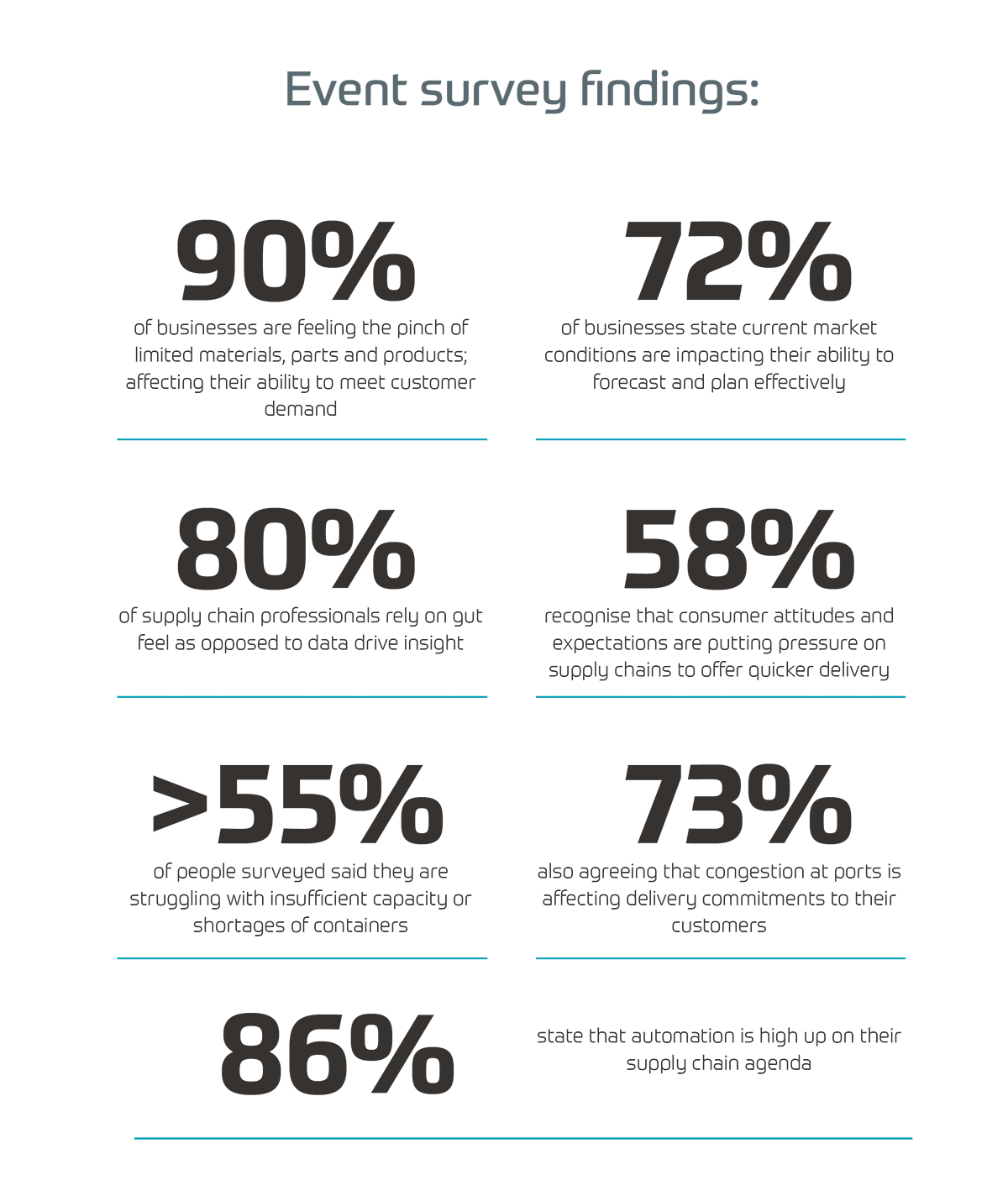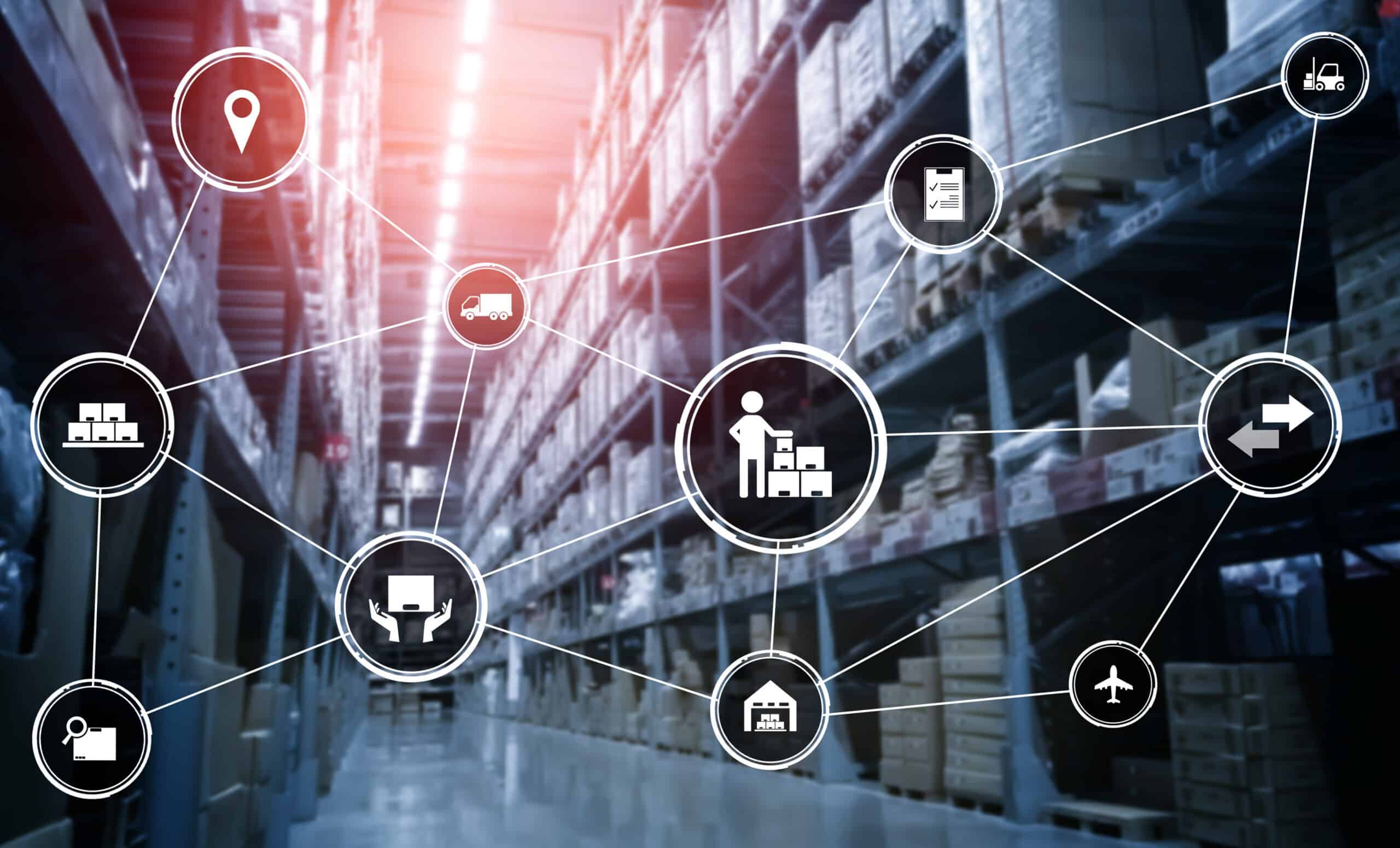Robiquity In Partnership With Automation Hero Supply Chain Event Summary

Overview
There are issues across all supply chain segments. Labour, raw materials, in consistent productivity feeding supply, transportation, all aspects of supply chain are under pressure.
Opposite we explore opportunities to reduce or mitigate the impact of some of the challenges faced. Intelligent automation can give supply chains a competitive advantage, fast.
Be smart: make data driven decisions using artificial intelligence and machine learning to drive action through automation
Opportunities to mitigate impact:
Reduce manual/paper exercises – automate purchase order creation, invoice management, paper routing and deliveries, warehouse goods in manifests and inventory reconciliation.
Purchase Optimisation-data driven container utilisation and load building supported by purchasing strategies that create considered purchase orders.
Capacity Management & Optimisation- reduce the product range on offer and drive sales through high margin, high volume throughput using automation to trigger data driven (targeted) sales strategies.
Omnichannel Fulfilment & Inventory Control- introduce real-time inventory tracking and management using automations to place product in location, create movement and drive pick route optimisation. Have the right product in the right place and at the right time.
Driver Recruitment- encourage drivers back into the industry through competitive benefits and pay. Reduce the manual burden in back office operations to re-invest the savings into driver resources.
The ideology that ERP transformations and implementations are going to fix all business problems, processes and operating models is a fallacy!
Customer expectation & meeting their needs:
Choice, Convenience and Ease
Evolve forecasting models to become more sophisticated by moving away from flat models that just take historical sales data, lead time and seasonal trends and look to utilise machine learning to include more behavioural predictions such as customer behaviours, market behaviours, supplier behaviours, footfall stats and returns data.
Invest in the right stock and keep stock holding low but avoid stock outs! Maintain availability in fast moving products.
Give visibility and traceability to customers. Always keep them in the loop on product availability, delivery and sustainability.
Provide fast delivery! Use automation to expand and aggregate delivery partners to enhance your delivery proposition.
Introduce self-service functionality to allow customers to amend, update and cancel orders.
Automate purchasing activities and complement with automated invoice reconciliation.
Have product in the right place and at the right time to meet consumer demand.
ROI efficiencies that automation can drive:
Supply chain’s are rife with manual processing and spreadsheet management. Legacy systems and lack of integrations drive huge cost to the bottom line… business growth often results in bums on seats and exponential growth.
An effective operation maintains and utilises the capacity of its existing resources through the use of automation.
Automation is quick to deliver, it creates the capacity to grow without exponential investment in people and it pays for itself within months.
Legacy systems:
There is no getting away from legacy systems or complex infrastructures; a business does not need to go through a whole ERP or systems transformation to reap the benefits that automation brings. Think of automation as digital glue, it can lift and shift and drive action as a human would by utilising user interfaces. Through the pushing and pulling of data, automation can provide holistic data views without the need for a data management system and it doesn’t require API’s that take time to build and can often be quite complex. Automation development times are much quicker than system integrations and bespoke built solutions; typically taking around 5 weeks with quick ROI.
Implementing new ERP’s or changes to existing can be frustrating and restrictive for end users and almost always still requires an end user to extract data from the system, work on spreadsheets and go back and upload data to the ERP. This is mainly due to a one size fits all vendor approach which often leads to restricted capability or manual workarounds.
Senior decision makers can be too far removed from the challenges that new ERP implementations bring. On the face of it, introducing a new system may look to have business and commercial benefit however in the long term, there are usually hidden resource costs due to the manual workarounds that end users have to implement to due system shortfalls (one size fits all).
What is ERP transformation giving back to your business…. apart from a very large bill, no ROI, headaches for the end users and capability that is outdated once it is delivered?!!
Invest in Automation:
Automation is often referred to as a sticking plaster, I believe this to be short sighted … businesses who embrace automation to introduce or bridge capability that they can’t achieve with existing systems are intelligent, commercially savvy, realistic and forward thinking.
You only need to look at what Intelligent automation brings to the table to see that any organisation who doesn’t invest and embrace these new technological landscapes are going to be left behind; continuing to carry out the manual lifting and shifting and working with flat data structures that don’t drive actionable insight.
Optimising business processes is one of the top three ways most executives anticipate that artificial intelligence (AI) will help them compete within the next two to three years. The other top two AI impact areas are personalised customer experiences and enhanced forecasting and decision-making capabilities.
Robiquity offers speed to value with deliverables within as little as 5 weeks, ROI in year, savings an Av over £500k per annum and an average capacity generation of circa 27,000 hours back to the business!!
Are you an intelligent, commercially savvy, realistic and forward-thinking business??
Watch the video here


